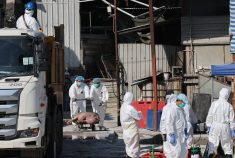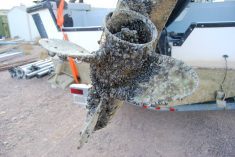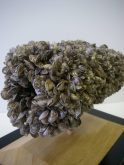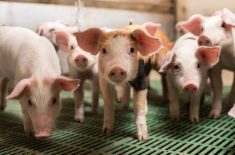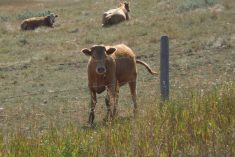Experts worry wild pigs on the Prairies and domestic hogs are on a collision course — and the fallout could be enormous if PED ever infects the wild population.
“We know globally from a lot of research and monitoring that wild pigs can be very serious reservoirs of disease and hold the disease,” said Ryan Brook, an animal sciences professor at the University of Saskatchewan and expert on wild pigs.
“But also they can spread the disease either by directly contacting animals, but also indirectly through shared feed.”
Read Also

Moo translator and methane measures: There’s an app for that
Dalhousie University researchers use artificial intelligence to create new dairy farm apps that analyze cattle sounds and measure methane.
And even though most commercial pig herds are entirely kept indoors, the threat of disease spread is still there, he said.
“Wild pigs and domestic pigs can interbreed and so wild pigs are attracted to sow barns,” said Brook. “Wild pigs are attracted to the smell of pig manure… and we know that these diseases can be spread through that kind of contact. We really have to look at disease and I think that’s something that should be a priority.”
- IN PHOTOS: Wild pigs a growing threat
Places such as South Korea and parts of the U.S. have already seen issues with porcine epidemic diarrhea (PED) in wild populations, he noted.
Brook has spent the last 12 years trying to track Canada’s wild pig population and range, and his research has shown an exponentially growing problem on the Prairies, particularly in Manitoba and Saskatchewan.
However, there have been numerous confirmed sightings in Alberta, including a band across the north-central region (from the Saskatchewan border to Hinton) as well as parts of the Peace and areas around Red Deer and Calgary. This fall, it was confirmed they had invaded Elk Island national park.

Wild pigs can be highly destructive, tearing up fields with their rooting and damaging waterways. (The animals, which can weigh as much as 250 pounds, need to wallow in order to cool themselves as they have no sweat glands.)
‘Coming right onto farms’
Right now, Manitoba is battling another outbreak of PED and has not gone a year without new cases since it was first detected in 2014.
Should it gain a foothold in the wild pig population, the fight against PED would become significantly more complicated.
In Europe, wild boar have become a vector for African swine fever (ASF). Thousands of wild boar have been found positive for ASF in Poland and now Germany. The first confirmation of an infected wild boar came in September 2020 and since then, well over 2,000 wild animals had been found ASF positive with four east German pig farms reporting infections.

While wild pigs are notoriously elusive, Brook’s team has been gathering data on wild pig occurrences — such as tracks, rooting, trail camera images, and sightings — as well as collaring wild pigs and tracking their movements through GPS, in an effort to get some ballpark idea of population density and range.
That research has found ample evidence of overlap between wild pig range and domestic hog production.
“In some cases, these collared pigs are coming right onto farms,” said Brook, who is advocating for testing of wild populations.
However, there is little point in testing without a strategy to go with it, he added.
“I would not advocate running out and testing a bunch of samples until there are plans,” he said. “How do we respond if something is found?”
Hunting doesn’t work as it scatters the animals that aren’t killed, resulting in more groups (called sounders) being formed. Instead, the entire sounder must be captured — a laborious process that requires setting up a corral, baiting them with feed, waiting for the group to become accustomed to the trap, and then closing the gate remotely (by operators using webcams) when an entire sounder is present.
But a wild pig strategy must look beyond eradication, and start turning to tools like zoning, said Brook. For example, major pork-producing regions would be a high-value area to protect.

“We know the pigs are spreading,” he said. “We know that they interact with farms and it’s just a matter, I think, of really thinking hard about what are our options around getting ahead of this.
“It’s always cheaper and much more effective to be proactive and in front of this than trying to play catch-up after.”
If you spot wild boar or evidence of their presence (such as tracks, damage from rooting/wallowing or boar hair caught on barbed wire), you should report it by emailing [email protected] or calling 310-3276 (FARM). If possible take a photo.
The Alberta Invasive Species Council has also launched a Squeal on Pigs program with more information and resources. It can be found at abinvasives.ca/squeal-on-pigs.




